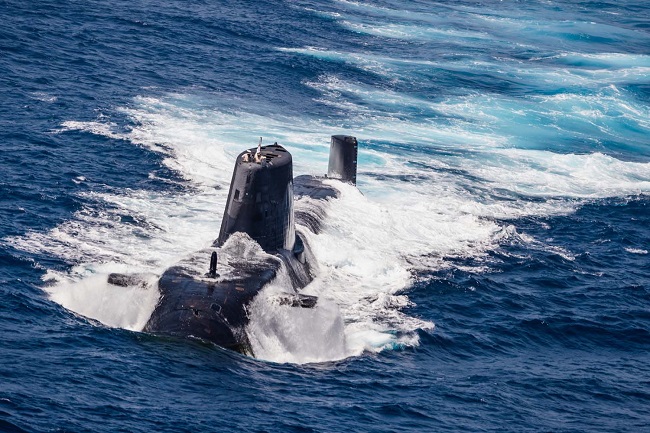
The Royal Navy has conducted a pioneering test demonstrating the launch and recovery of uncrewed underwater vehicles (UUVs) from a Nuclear-powered attack submarine (SSN), HMS ASTUTE. The trial, conducted by the Submarine Delivery Agency’s Autonomy Unit, in partnership with L3Harris, successfully evaluated the use of torpedo tubes to deploy and retrieve autonomous systems for conducting underwater reconnaissance, communication, and seabed warfare missions.
In detail, HMS ASTUTE deployed and recovered an L3Harris IVER4 uncrewed underwater vehicle (UUV) using the new, revolutionary, submarine Torpedo Tube Launch and Recovery (TTL&R) capability. This removes the need for a submarine to surface to retrieve an offboard system, preserving stealth while enhancing operational flexibility. The hardest and challenging aspect of this process is the recovery of the UUV which requires navigating precisely back into the narrow confines of a torpedo tube, which was not originally designed for this specific purpose, while the boat remains in a fixed position. In accordance with the British media, the exact method used is classified, but it is possible that modifications to the tube door may have been needed to conduct the successful recovery. After the UUV is back onboard, its collected data can be downloaded, the battery recharged, and updated mission instructions uploaded, allowing for continued operation while submerged. The TTL&R capability also offers the possibility to use the UUV as a decoy, as well as a powerful offboard sensor system that can operate independently.
The trial took place in the Mediterranean under Project SCYLLA. This project is being delivered as part of AUKUS Pillar 2, which focuses on developing advanced defence technologies to strengthen security across both the Indo-Pacific and Euro-Atlantic regions. Commodore Marcus Rose, Deputy Director for Underwater Battlespace Capabilities, stated that the “Delivery of these trials demonstrates our commitment to the use of advanced capabilities as part of a future hybrid Fleet and are a big step forward in delivering new capability to the Submarine Service.”
The Royal Navy officially communicated that this trial was part of a portfolio (of projects) which is known as ‘Atlantic Bastion’, which aims to incorporate new and advanced technologies, including drones and artificial intelligence, to boost the effectiveness of the hybrid Fleet in contested environments.








.png)
